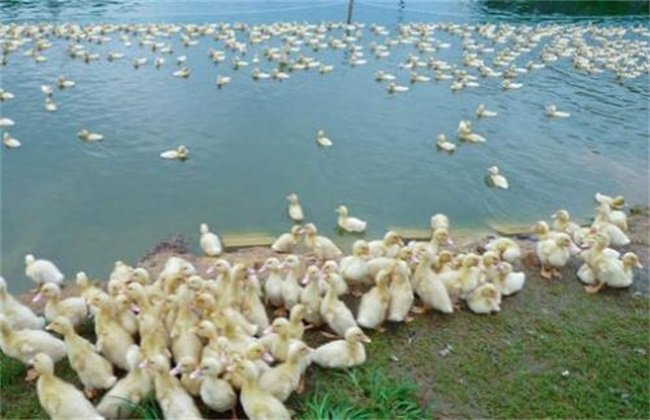The technique of raising Duck in Dryland
Now there are more and more ways to raise ducks, but many of them need large venues, which brings great problems to large-scale breeding, especially the limitation of water sources makes it more difficult. Let's learn about the technology of raising ducks in dry land, so that small farms can raise large-scale ducks and solve the problem that people want to expand their scale.

1. Set up the site
There is no need to choose places such as rivers to raise ducks in dry land, as long as there is a water source nearby, the core of which is to use pools instead of rivers to meet ducks' water needs. In the middle, a pool is built according to its own breeding scale, with a depth of about 0.5-1 meter, and a drain and inlet are prepared on both sides to deal with the source of water. A duck house is prepared next to it so that the ducks can make room for daily management. Prepare a few larger water fountains and distribute them evenly.
2. Seed selection
With this model, there is a certain demand for duck breeds, one is to be more docile and quieter, so that the fight will be smaller when taking turns into the pool, and the ducks will not lose easily. Secondly, the ability of disease resistance is a little higher, after all, the prevention of duck disease in this density is still very important. Finally, the fattening effect is better, and this model pays attention to the quick exit of ducks, because in this mode, ducks have a small amount of activity, and only fattening ducks will reduce feed waste.
3. Feeding technology
The demand for feed in this model is not much different from the usual, but there is relatively more green feed, and some small fish and shrimp should be fed regularly to properly meet the needs of various elements of ducks and reduce the risk of disease. The number of times of feeding is 3-4 times a day. Under this mode, the ducks exercise less and the feed is not digested very fast. In order to give them enough time to digest, eating less and eating more is the most suitable way of feeding.
4. Sanitary cleaning
Finally, it is sanitary cleaning, because the density of ducks is too high, so special attention should be paid to hygiene, especially duck dung and pools. Clean duck dung once every 3-5 days according to the situation to avoid accumulation. The water in the pool is actually very good fat water, because ducks will also have a lot of feces excreted in it, so the water in the pool can be discharged and precipitated, and the duck dung deposited below can be watered. Need to disinfect once a month, do a good job of disease prevention.
The above is the technology of raising ducks in dry land. Raising ducks in dry land can greatly reduce the demand for water for ducks, and at the same time, it is also convenient for everyone to manage. After all, daily grazing ducks are difficult to manage manually. If you have less space, you might as well try this model.
Related
- On the eggshell is a badge full of pride. British Poultry Egg Market and Consumer observation
- British study: 72% of Britons are willing to buy native eggs raised by insects
- Guidelines for friendly egg production revised the increase of space in chicken sheds can not be forced to change feathers and lay eggs.
- Risk of delay in customs clearance Australia suspends lobster exports to China
- Pig semen-the Vector of virus Transmission (4)
- Pig semen-the Vector of virus Transmission (3)
- Five common causes of difficult control of classical swine fever in clinic and their countermeasures
- Foot-and-mouth disease is the most effective way to prevent it!
- PED is the number one killer of piglets and has to be guarded against in autumn and winter.
- What is "yellow fat pig"? Have you ever heard the pig collector talk about "yellow fat pig"?



